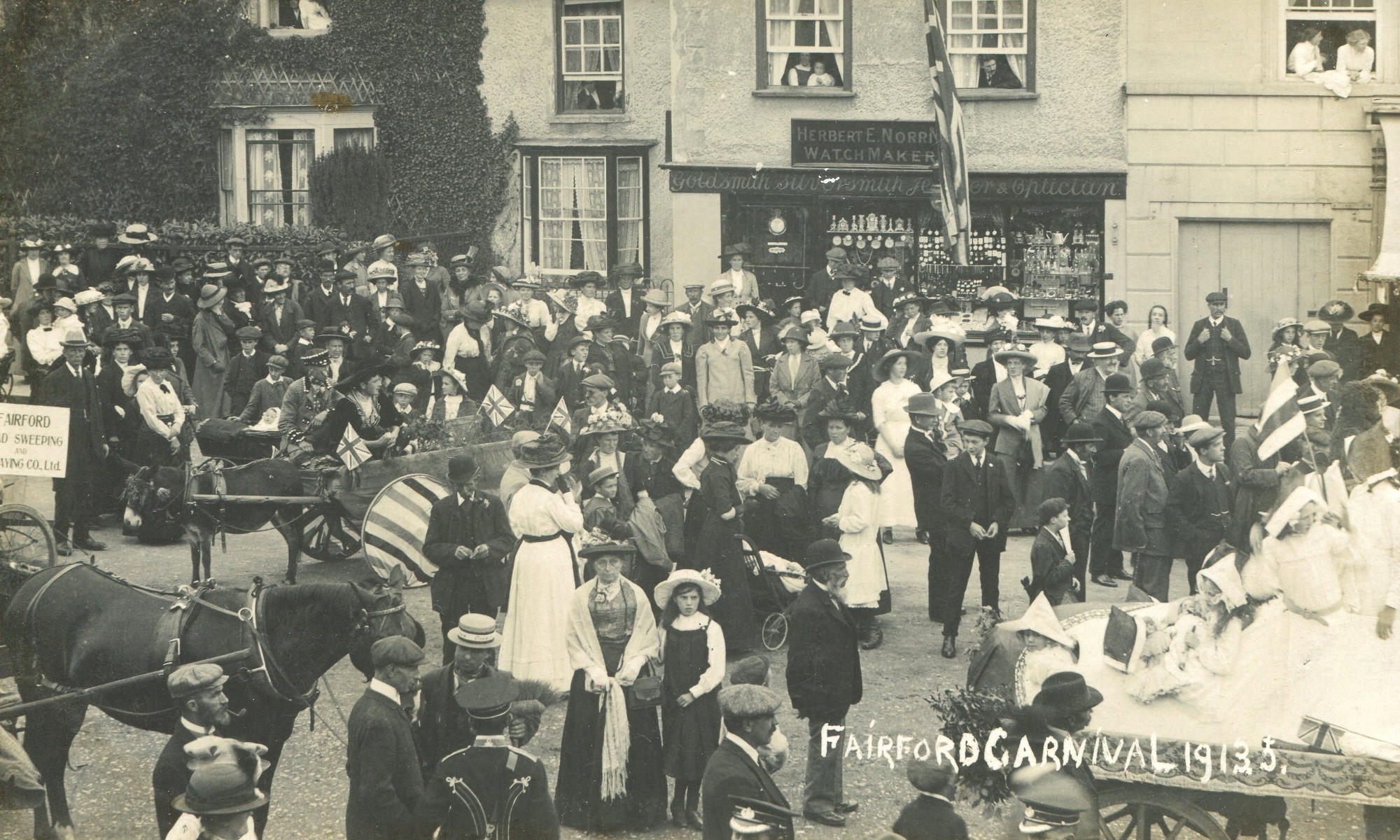The Oxpens
These ancient oxpens used to accommodate pairs of oxen for ploughing. The building and the site was restored after the Ernest Cook Trust took over the Estate in the 1950s. The used to farm with oxen in Gloucestershire up to the 1960s.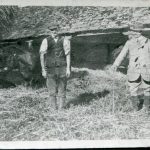
The photograph shows Alex Iles, farmer of Park Farm and with his stockman, William Westbury in the early 20th century when the enclosure was in use.
The site appears on 19th century maps but probably dates from much earlier as there is a mention in a 17th century documents for Wurmstalls [animal enclosure] near the Greate Greene.
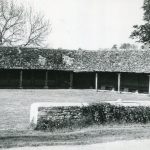 In the early 2000s the some of the old Cotswold stone tiles were stolen and the photo shoes after this has happened. They were later replaced and the site tidied up and is now a picnic site.
In the early 2000s the some of the old Cotswold stone tiles were stolen and the photo shoes after this has happened. They were later replaced and the site tidied up and is now a picnic site.
Fairford Waterworks and Gassons Field tower
The tower in Gassons field is a water tower. It was gravity fed from the res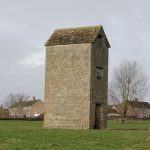 ervoirs in the woodland between Pitham Brook path and the Quenington Road that served Dynevor Terrace. These two reservoir were fed from a pump in the Fairford Mill through pipes across the field and were put in place in the early 20th century.
ervoirs in the woodland between Pitham Brook path and the Quenington Road that served Dynevor Terrace. These two reservoir were fed from a pump in the Fairford Mill through pipes across the field and were put in place in the early 20th century.
In the water tower was a large tank under which water tank on a cart was place was filled by pulling a chain/rope to relese the water.
See attached article by Syd Flatman for further information Fairford waterworks
Rev W B Keer, 1827-1898
Richard Bignell died 1817
Fairford Park Obelisk
The Obelisk
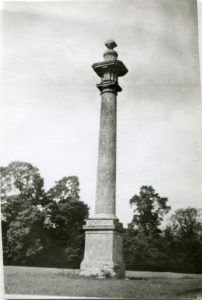
Many of you will have noticed the obelisk which stands isolated in a field off Leafield Road. It is Grade II listed and described as a Votive Column with a large square ashlar base with moulded plinth and cornice, unfluted Doric column with square section of entablature, surmounted by small cylindrical cap with ball finial set within square. There is no inscription.
It was built between 1751 and 1761 at which time the formal gardens of Fairford Park were being landscaped by James and Esther Lambe. The obelisk is in direct line of sight 1,220 meters from the north facing front entrance of the House. It would originally have been viewed through a long avenue of trees. If you stand at the back of the Stables occupied by the Ernest Cook Trust you have a splendid view of the Obelisk.
Fairford Workhouse
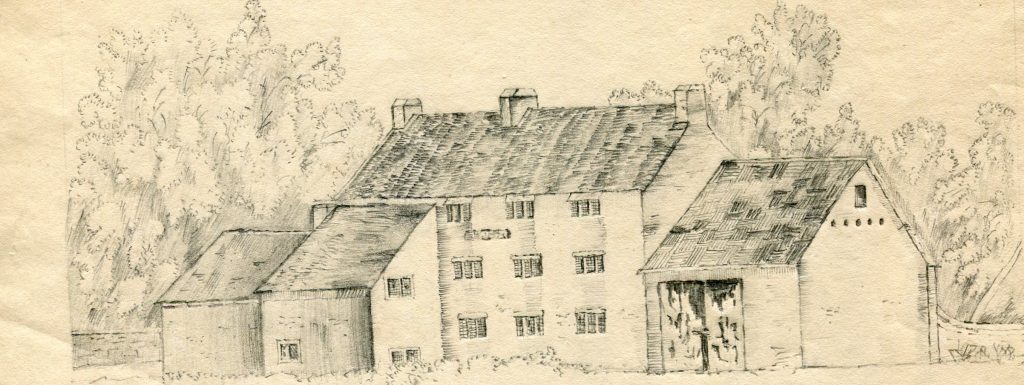
Fairford Workhouse, the ‘House of Industry’ opened in the Croft in 1773. There were 23 inmates in 1803 when the men dug stones in ‘ye Crofts’ and the women were paid 8d per pound spun flax and 6d per pound of woven sheeting. From that year’s income of £37, the Governor was paid a salary of £15, Barber Cowley received 6s 6d for ‘shaving ye old men’. Sarah Cowley had a new pair of stays costing 2s 6d; the inmates had 4s 3d between them to spend at the November fair, and the rest was expended on a hundredweight of soap, pig killing, funerals, tin cups and Epsom salts. The work house was pulled down in 1870 and the stones used to build the Infants’ School. It was approximately on the site of where Fairford Hospital is now.
Taken from June Lewis’s History of Fairford. 1982
Ebenezer Pococke 1807-1864
Ebenezer Pococke was one of the private patients in The Retreat asylum in Fairford. The asylum was founded in 1822 by Alexander Iles in his house at the corner of Milton Street and Horcott Road. It was one of the few privately-owned asylums in Gloucestershire and during the 19th Century it built up a good reputation for the standard of care of its patients. Between 1822 and 1944, when it closed, The Retreat treated about 1,500 patients, some of whom ended their days there.
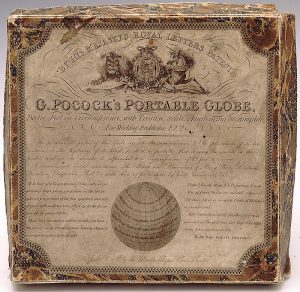
Ebenezer was born in Hungerford in 1807, one of the 14 children of George and Elizabeth Pococke. George was a Methodist preacher and master of a private academy in Bristol. George was also something of an inventor and experimented with large kites for pulling coaches and for carrying people. Assisted by Ebenezer, George Pococke also invented an inflatable globe made up of pieces of paper upon which sections of maps were printed. This invention had some commercial success and a few examples have survived in museums. In 1833 Ebenezer married Sarah Eliza Holder in Bristol and later the couple had two daughters. In the same year Ebenezer had a book published titled ‘Flowers of the East’, a study of Indian poetry and music. This presumably indicates that Ebenezer must have spent some time in the Indian subcontinent prior to 1833. Ebenezer entered Magdalen Hall in Oxford on 5 July 1838 where he would have received a classical education, but may not have obtained his degree.
Ebenezer followed his father’s profession and by 1841 was the master of a private school at Bitton which had 17 pupils. Ten years later he was living in Sunbury, Middlesex teaching just four female pupils and by 1861 his career had declined even further as he was boarding in a house in Winterbourne as a tutor possibly to the occupant’s children. At this date Ebenezer’s wife Sarah was living with her sister and brother-in-law in Sydenham, Kent and had possibly separated from her husband.
Ebenezer’s mental health had probably been poor for some time before he was admitted to The Retreat on 19 Dec 1863. The Retreat, like all private asylums, had a Board of Visitors who regularly inspected the establishment to ensure it was being managed in accordance with the legal and medical requirements. An entry in the Visitors’ Book dated 5 March 1864 noted that Ebenezer was suffering from ‘nervous weakness’.
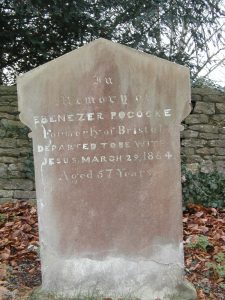
After just over three months as a patient Ebenezer Pococke died in The Retreat on 29 March 1864 at the age of 57. He was buried in St Mary’s churchyard directly opposite the grave of Alexander Iles, the founder of the institution where Ebenezer had spent his last days. He is one of the very few patients of The Retreat to have a headstone erected over his grave, presumably paid for either by his wife or his surviving siblings.
As an interesting footnote to the life of Ebenezer Pococke, his sister Martha married Dr Henry Mills Grace of Mangotsfield and in 1848 gave birth to a son, William Gilbert, universally known as ‘W G Grace’ one of England’s most celebrated cricketers.
Fairford Brickworks
Fairford Brickworks existed for about 70 years from c 1850- 1920. It was at Waiten Hill on a 10-acre site north of Cirencester Road. Today the barns are still there but the kiln is gone. The chimneys are no longer there but the base remains at about 6 foot. Today the barns are private homes. It made red bricks and clay water pipes and production ceased when the seam of red clay ran out. Thanks to Syd Flatman for this information and through him FHS is lucky enough to have a Fairford ‘Wane’ brick, donated by Bill Lanchbury.
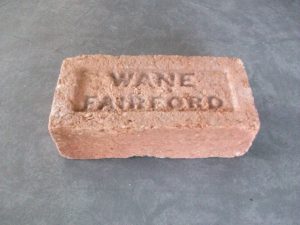
Around Fairford you can see buildings made of red brick e.g. Fairford Hospital and some houses in West End.
Below are entries from the trade directories from 1850 until 1910; it must have closed shortly after that.
1850, 52, 59 John Hurst Wane wine & spirit merchant brick & tile maker
1868 William Wane brick, tile and pipe maker
1879 William Dunn brick, tile and pipe maker Waiten Hills
1885 William Dunn brick, tile and drain pipe maker Waiten Hills
1889 William Dunn brick, tile and drain pipe maker Waiten Hills
1894 William Dunn brick, tile and drain pipe maker Waiten Hills
1897 William Dunn brick, tile and drain pipe maker Waiten Hills
1902 William Dunn brick, tile and drain pipe maker Waiten Hills
1906 Edward Hill brick, tile and drain pipe maker London Street
1910 Edward Hill brick and tile Waiten Hills
Wings School, Fairford
A small advertisement in the Birmingham Daily Post of 16 August 1944 announced the imminent arrival of a new school in Fairford. The advertisement stated: “COMMONWEAL LODGE, from Devon, OPENING AS “WINGS” AT FAIRFORD, GLOUCESTERSHIRE, SEPTEMBER 1944. Progressive approved School for Girls. Individual Tutorials. Music, Riding included.” Commonweal Lodge had been founded by William Webb in 1916 on his estate at Purley in Surrey. In 1941 the school had to move to Ardock Lodge in Lewdown near Okehampton, Devon as its building at Purley were taken over by the military. Three years later the school took up residence in Fairford in the buildings of The Retreat, a privately-run asylum which had been founded by Alexander Iles in 1822 and was owned by Dr A C King-Turner when it closed in 1944. However, the advertisement is slightly misleading as “Wings” appears to have been an offshoot of Commonweal Lodge School which returned to its original home at Purley at the end of the Second World War and remained there until it closed in 2010.
As the advertisement mentioned, riding was a very important aspect of the school’s activities and many of the almost 100 pupils brought their own ponies to school. “Wings” sponsored the Fairford Horse Show and Gymkhana which was held in the grounds of Fairford Park on 21 July 1945 and several of the girls took part in the show. The event was organised by the school’s bursar, Major Frank Edwards, and the proceeds were donated to the Fairford Cottage Hospital. The event was repeated the following year and was even more successful. One of the young riders who achieved national prominence in the sport was 11-year old Patricia Moss who jumped at the London Horse Show in June 1946. She was an outstanding rider having competed at horse shows since the age of four and was frequently mentioned in newspaper reports on riding events. Pat Moss later turned her focus to rally driving having been taught to drive by her brother Stirling Moss, one of Britain’s most famous Formula One racing drivers. She became one of Britain’s most successful female rally drivers becoming European Ladies Rally Champion five times in the 1950s and 1960s.
Pat Moss was not the only pupil of “Wings” to appear in the local and national press. Sisters Patricia and Diana Selous were pictured in the Gloucestershire Echo of 19 June 1946 with a horse named Winged Pan which apparently walked into the music room when it heard the sisters playing the piano and violin! Diana Selous and Pat Moss both won prizes at the Gloucester and District Horse Show which was held on 27 July 1946 when Pat Moss was the only competitor to achieve a clear round. Unfortunately the month ended on a less happy note on the 31st when one of the horses was knocked down by a Royal Air Force lorry in Horcott Road; both rider and pony sustained injuries. The emphasis on horse riding was no doubt due to the influence of the Principal of the school, Mrs Joan Hilsden, who had previously been the proprietor of a riding school in Felixstowe. Mrs Hilsden as well as teacher Noreen Morley and pupils Pat Moss, Diana Selous and Pamela Trotman had all competed at the National Horse Show at White City in June 1946.
Sadly the success at horse shows does not appear to have been accompanied by 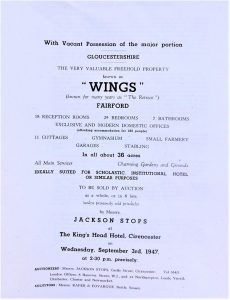 financial success and in September 1947 the buildings were put up for sale; the sales brochure giving an indication of the size of the etsablishment. In 1948 the property was bought by Gloucestershire County Council and in August the Council requested tenders to build a new block and renovate the existing buildings. In December the Council announced that the site would become a special school for up to 80 residential pupils with learning and behavioural difficulties. The school opened in May 1950 as Coln House School which finally closed in March 2017.
financial success and in September 1947 the buildings were put up for sale; the sales brochure giving an indication of the size of the etsablishment. In 1948 the property was bought by Gloucestershire County Council and in August the Council requested tenders to build a new block and renovate the existing buildings. In December the Council announced that the site would become a special school for up to 80 residential pupils with learning and behavioural difficulties. The school opened in May 1950 as Coln House School which finally closed in March 2017.
However this was not the end of “Wings” as the school moved to Charlton Park near Malmesbury. Although still under the management of Mrs Hilsden there seems to have been less emphasis on equestrian activities and more on practical skills such as shorthand and bookkeeping. Post certificate and finishing courses were offered for girls up to the age of 19. Unfortunately the school failed to prosper for very long at Charlton Park and in November 1953 the Principal and two of her staff filed for bankruptcy thereby bringing an end to “Wings” School.
The Thames and Severn Canal
On 17th of March 2010,Bruce Hall, of the Cotswold Canals Trust gave a talk to the Society about the 36-mile journey from the Severn to the Thames through the industrial area of the Stroudwater Navigation to the rural Thames and Severn Canal. The canal passed within a few miles of Fairford and traces of it can still be found at Kempsford and Dudgrove today. The most important cargo was coal especially from the Forest of Dean which was needed to supply power to the mills of the Stroud Valley.
The Stroudwater Navigation opened in July 1779; construction of the Thames and Severn Canal started at the western end in 1783 and the first barge entered the canal at Wallbridge in 1785 by which time the canal had probably reached Chalford. The Sapperton Tunnel, the third longest canal tunnel ever constructed in Britain, took five years to complete. In July 1788 much of the tunnel structure was complete when King George III and family visited the site; the stretch from the Coates portal eastwards is called King’s Reach in his honour. The first barge passed through the tunnel in April 1789.
On 19th November 1789 the first barge reached Lechlade, an occasion which was celebrated by a ball, a bonfire and a 12-cannon salute from nearby Buscot Park. However, competition from the railways in the 19th Century was too much for the Thames and Severn and this, along with continuing problems of excessive leakage, caused its closure in 1933.
In 2009 the Cotswold Canals Trust acquired Inglesham Lock and the Inland Waterways Association raised funds to completely renovate the old lock. The Waterway Recovery Group cleared much of the overgrown vegetation from the disused cana
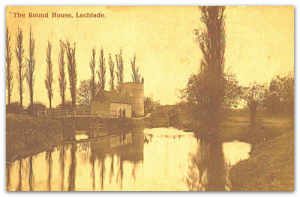
The restoration of the Stroudwater Navigation is well under way. Pictures of abandoned industrial sites show how the site has been transformed into the more modern use of housing and leisure. Bridges have been replaced by Gloucestershire County Council, towpaths reinstated and what were barriers of new roads and motorways have been turned into surmountable challenges. In some places the course of the River Frome has been a useful diversion.
Interesting facts
- The bottom of locks were built concave to withstand water pressure from the vertical walls
- The Canal was originally 7 feet deep but has not been dredged so deeply. Leisure-craft do not need that depth and it was necessary to avoid disturbing the pollution of the sediment from the industrial era
- The flat-bottomed Trow had a removable mast that was used on the tidal reaches of the River Severn up to Worcester. It was 16 feet wide and 68 feet long and built to carry coal and goods only as far as Brimscombe Port. Here the loads were transformed to Thames barges. Later narrow boats 7 feet wide and 70 feet long were more commonly used and as a result the locks were shortened about 1841-42 – this was also a water-economy measure
- The Lengthsmen and their families who lived in the five Roundhouses along the Thames & Severn were responsible for keeping their stretch of water clear and also looked after the lock if there was one
- The new bridge opened at Stonehouse in 1994 was the first ever plastic bridge. The building there was used by Sperry’s Gyroscope during World War II and had a gun emplacement on top
- The Severn-Thames link is 36 miles long with 56 locks, the Thames and Severn from Wallbridge to Inglesham is 28.5 miles long with 42 locks
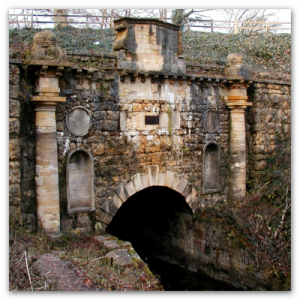
More can be learnt at the Cotswold Canal Visitor Centre a & Canal Shop, Bell House, Wallbridge Lock, Stroud, GL5 3JS
Open 10am — 1pm Monday — Saturday throughout the year and at any other time that the green flag is flying!
Telephone 07582 286 636 or visit www.cotswoldcanals.com.
Further reading
The Thames and Severn Canal through time by David Viner, 2013
The Stroudwater and Thames and Severn Canals from old photographs. Vols 1-3 by Edwin Cuss and Mike Mills, 2010-3
